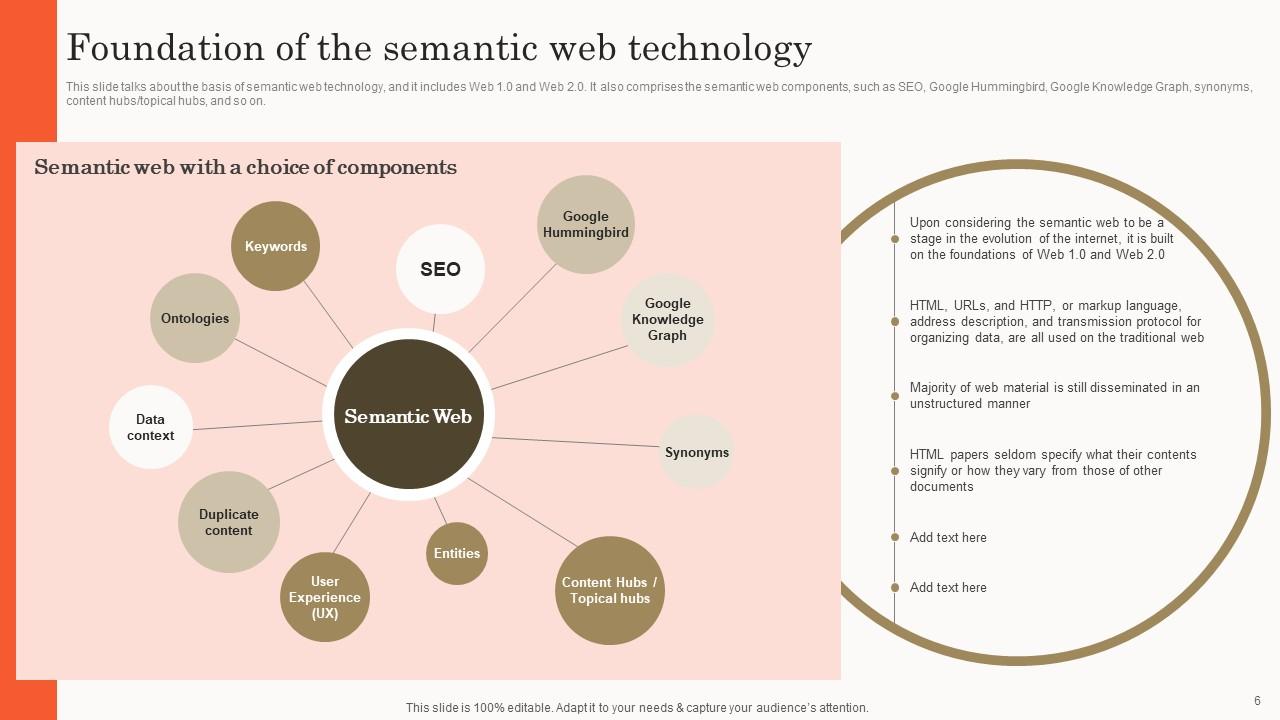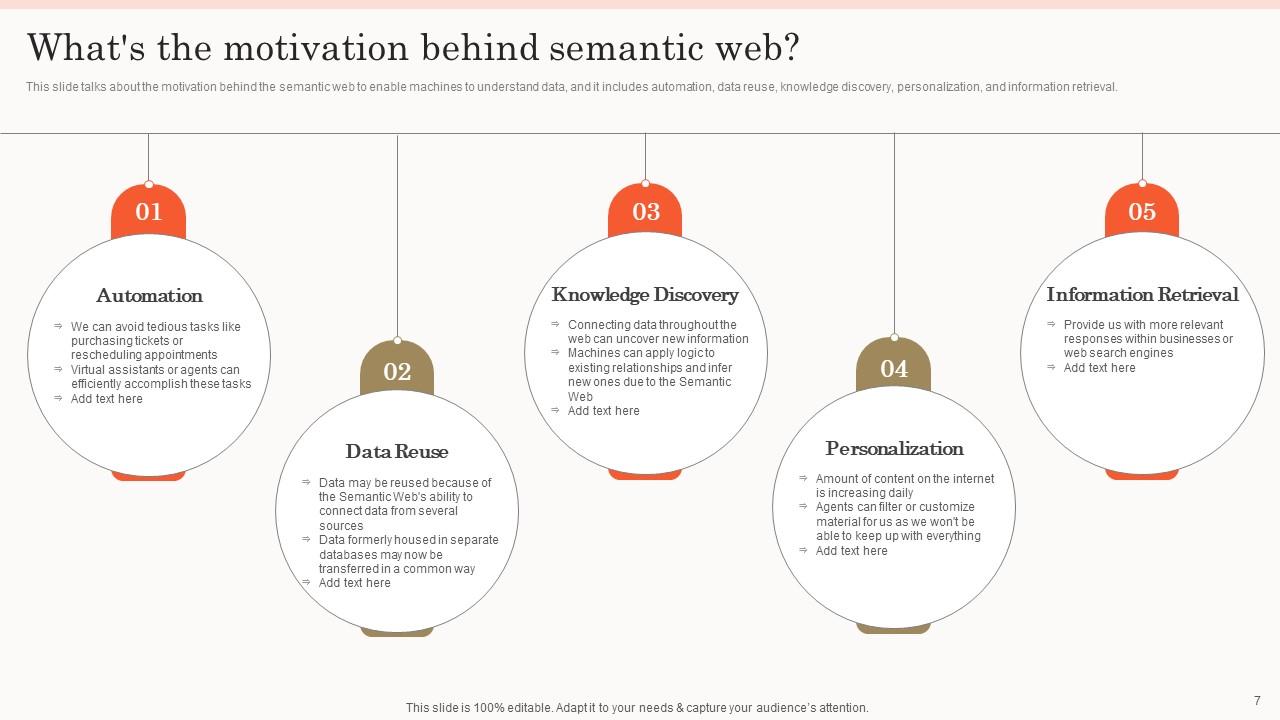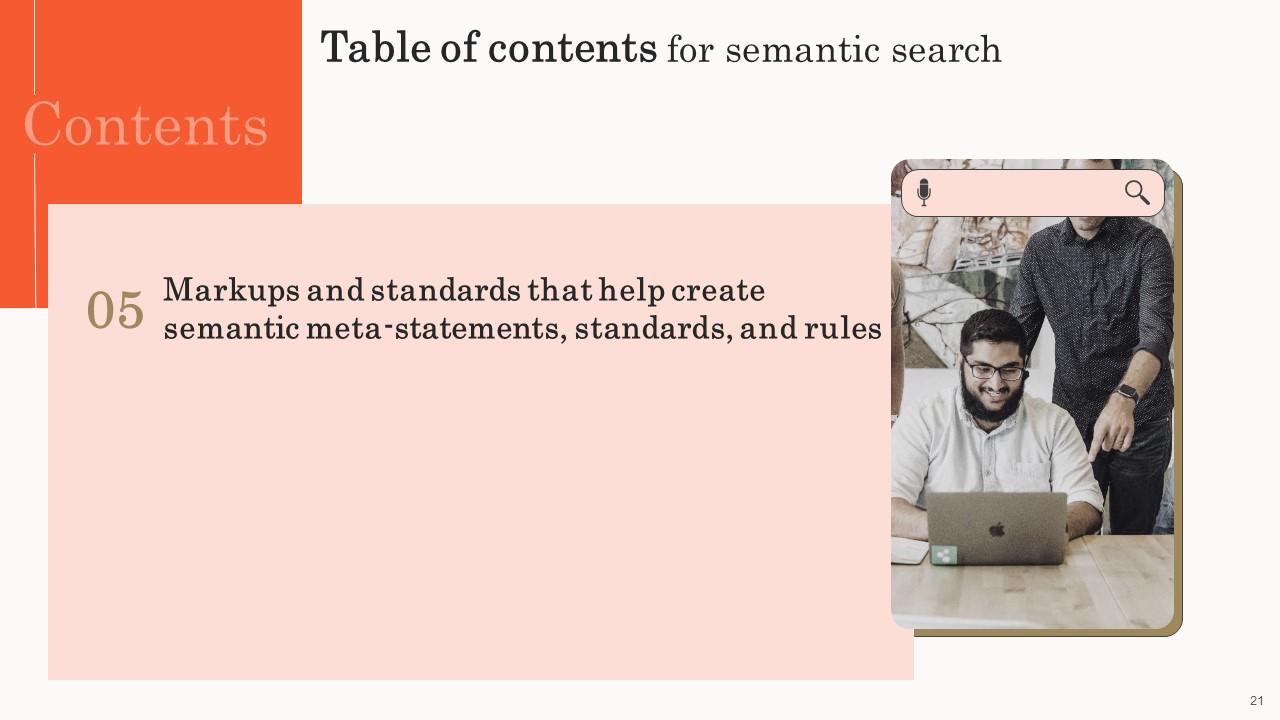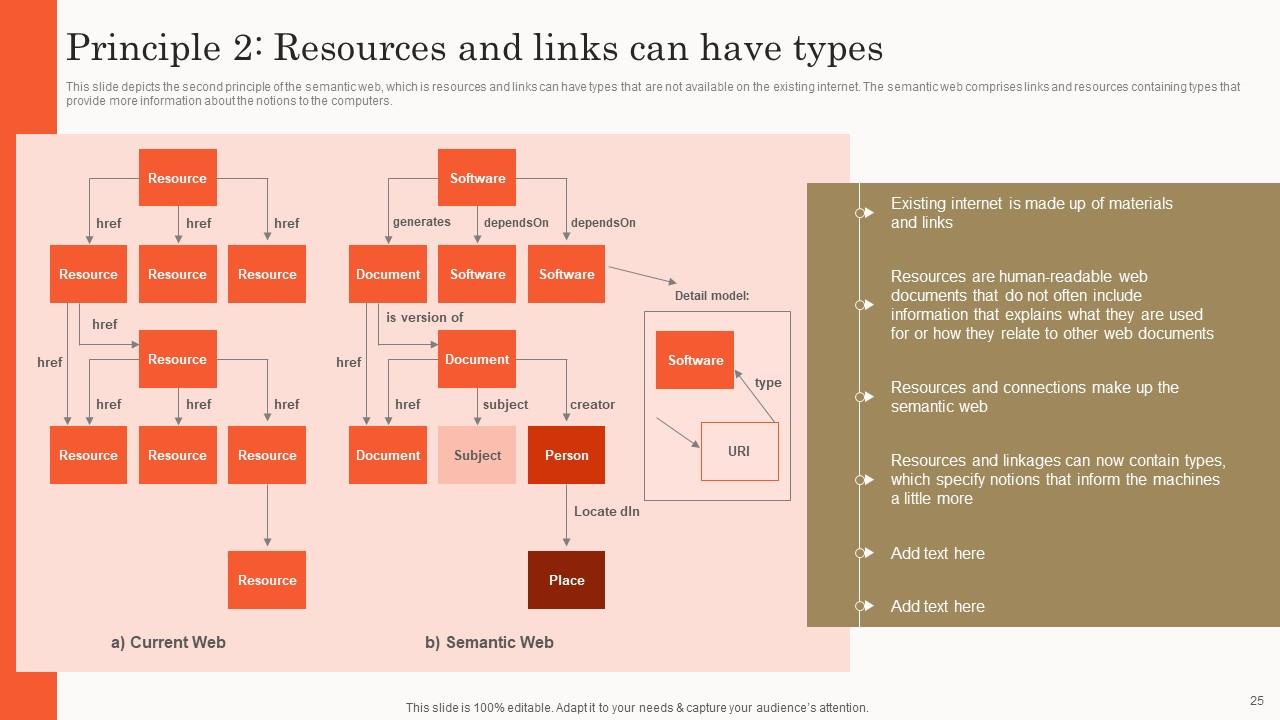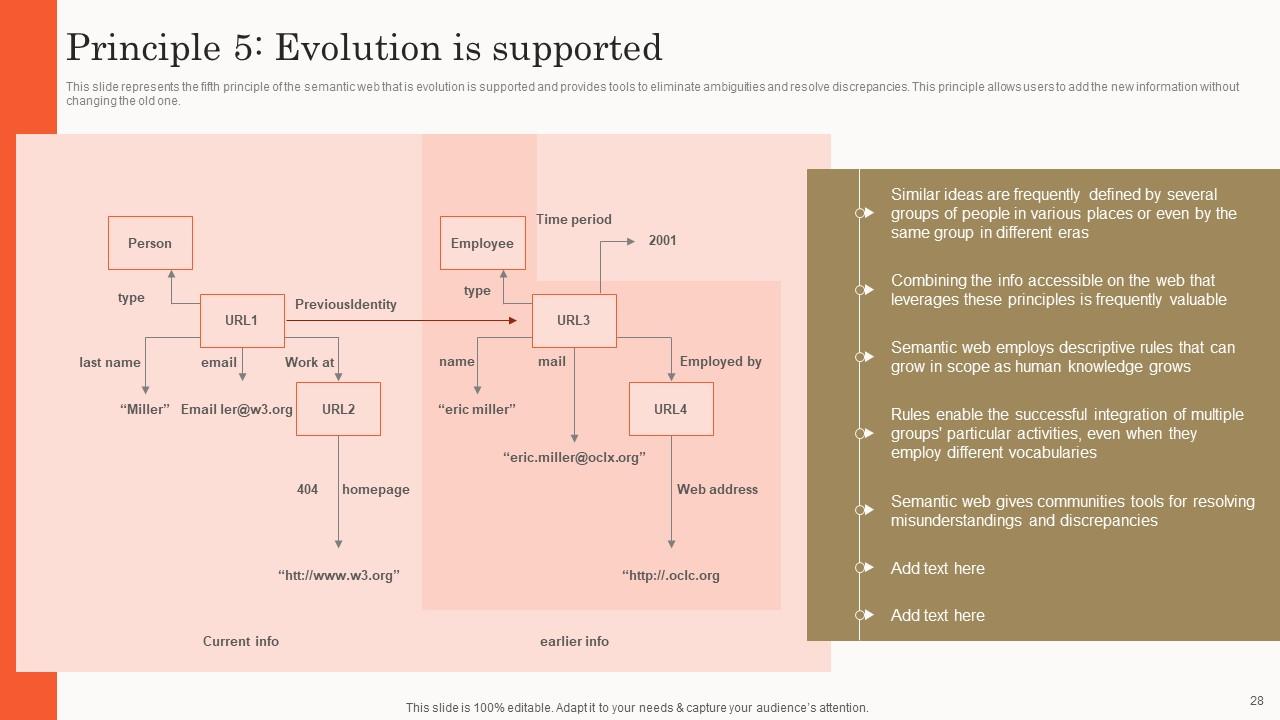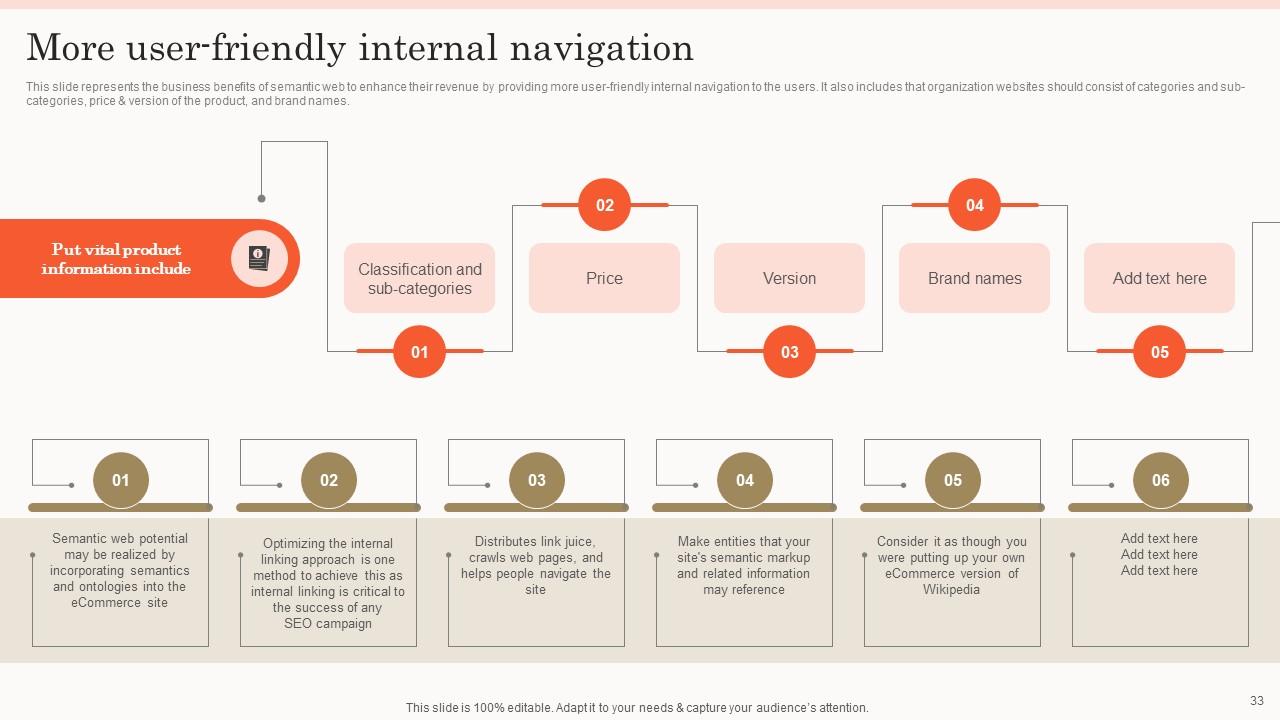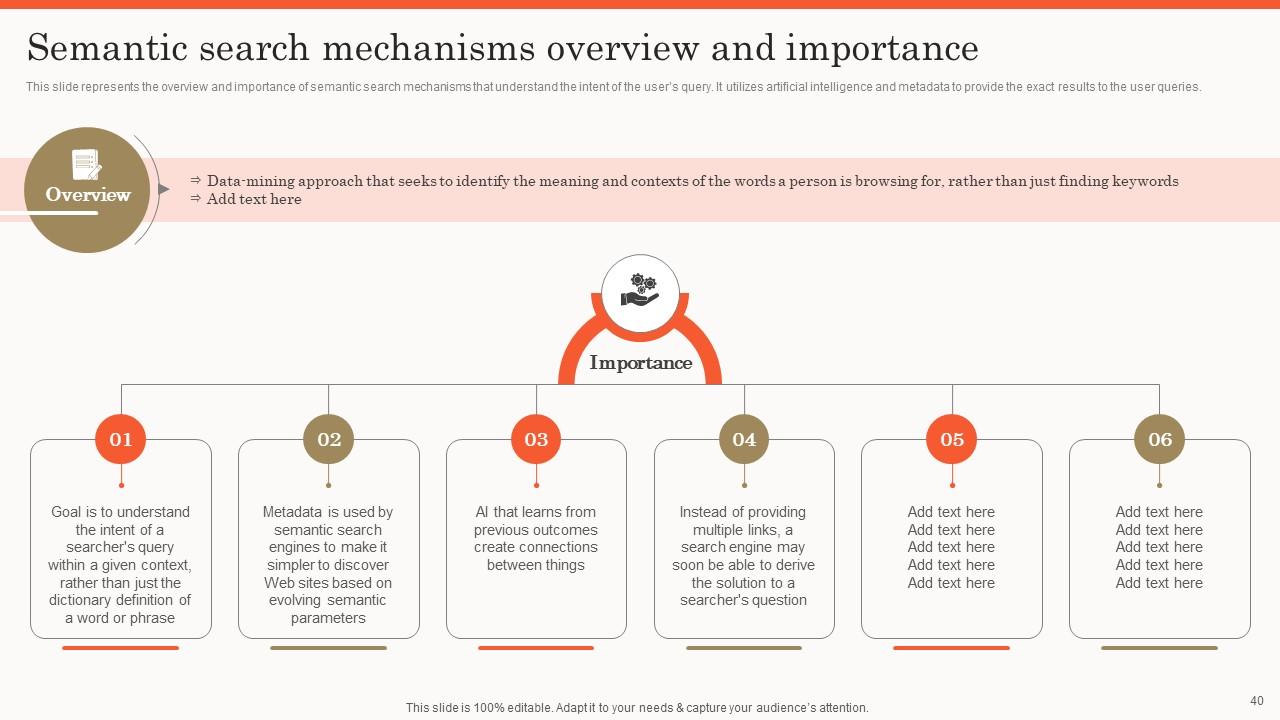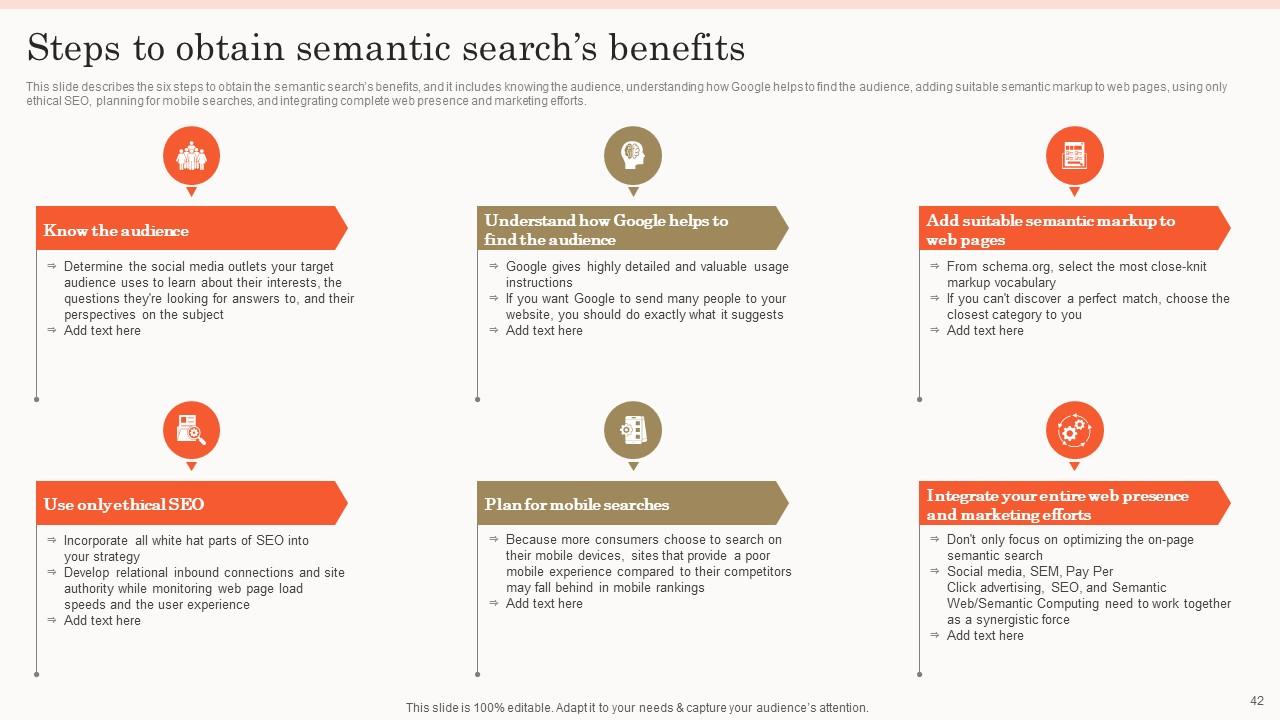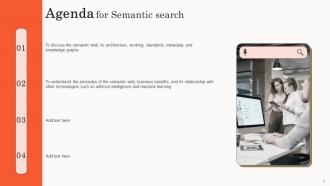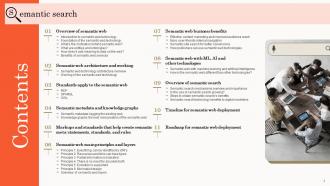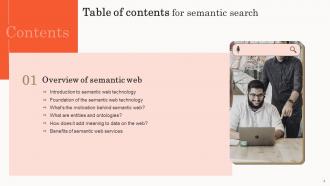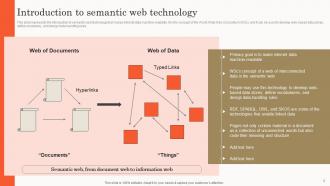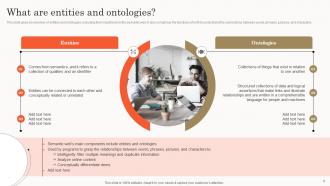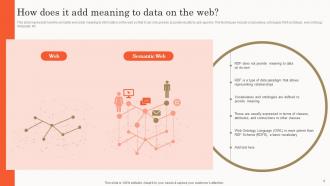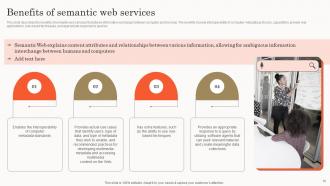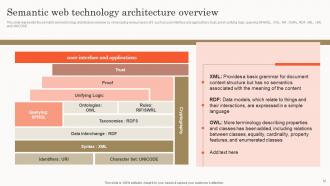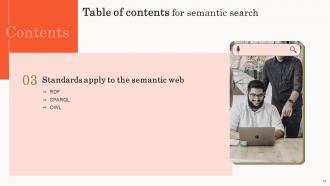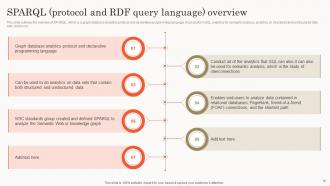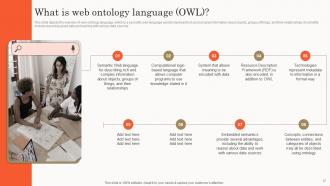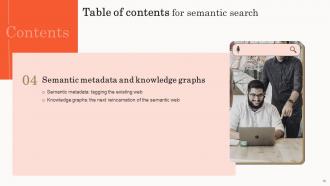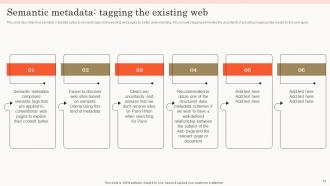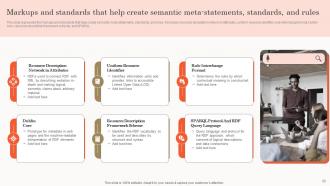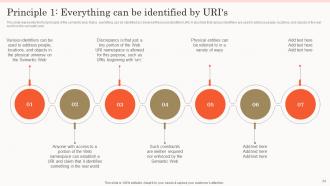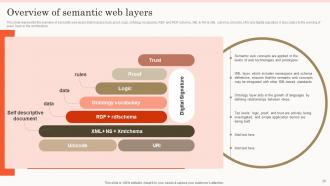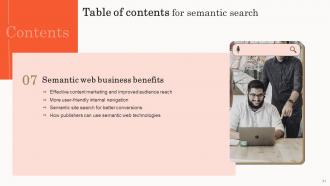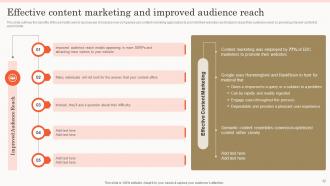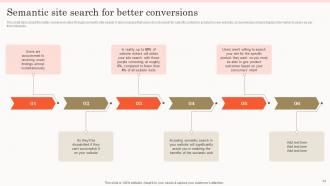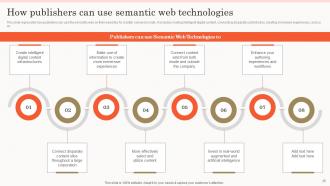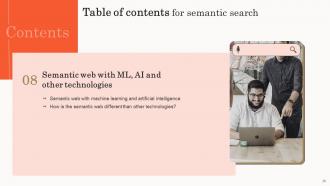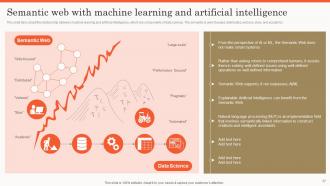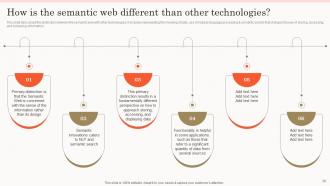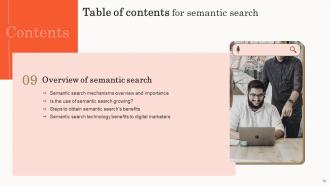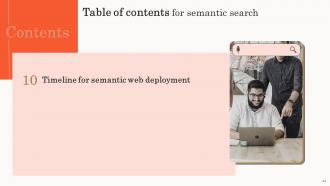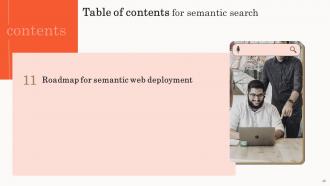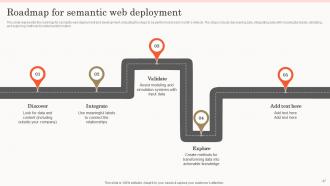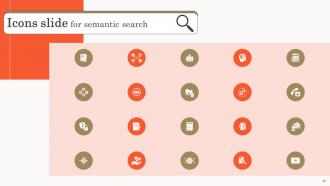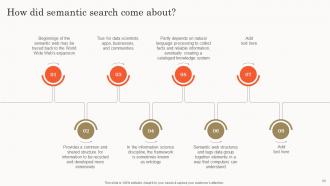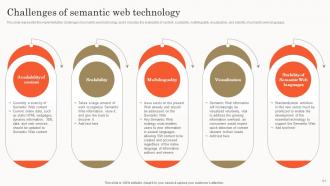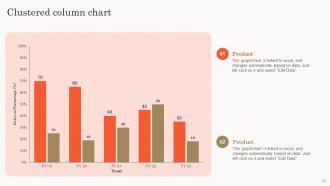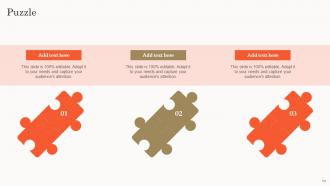Semantic Search Powerpoint Presentation Slides
Grab our professionally curated Semantic Search template. It discusses the semantic webs foundation, entities and ontologies, effects, and benefits. Our Semantic Web Ontology deck covers the semantic web design, how it functions, semantic web standards, knowledge graphs, and semantic metadata. Additionally, it showcases the Markups and measures that aid in developing semantic meta statements, bars, and norms. Further, our Semantic Web Principles PPT includes the principles and layers, resources, related links and their various kinds, partial information, and other things that URIs can recognize. It also discusses the business advantages of the semantic web and how it integrates with other technologies like machine learning and artificial intelligence. Furthermore, our Semantic Search module provides an overview of the semantic search mechanism and importance, the growth of semantic search, steps to obtain semantic searchs benefits, and its benefits to digital marketers. Lastly, it includes a roadmap and a timeline for semantic web development. Get access right away.
You must be logged in to download this presentation.
PowerPoint presentation slides
Enthrall your audience with this Semantic Search Powerpoint Presentation Slides. Increase your presentation threshold by deploying this well-crafted template. It acts as a great communication tool due to its well-researched content. It also contains stylized icons, graphics, visuals etc, which make it an immediate attention-grabber. Comprising fifty seven slides, this complete deck is all you need to get noticed. All the slides and their content can be altered to suit your unique business setting. Not only that, other components and graphics can also be modified to add personal touches to this prefabricated set.
People who downloaded this PowerPoint presentation also viewed the following :
Content of this Powerpoint Presentation
Slide 1: This slide introduces Semantic Search. Commence by stating Your Company Name.
Slide 2: This slide depicts the Agenda of the presentation.
Slide 3: This slide incorporates the Table Of Contents.
Slide 4: This slide states the Title for the Topics to be discussed next.
Slide 5: This slide represents the introduction to semantic web technology that makes internet data machine-readable.
Slide 6: This slide talks about the basis of semantic web technology, and it includes Web 1.0 and Web 2.0.
Slide 7: This slide shows the motivation behind the semantic web.
Slide 8: This slide gives an overview of entities and ontologies.
Slide 9: This slide presents how the semantic web adds meaning to information on the web.
Slide 10: This slide describes the benefits of semantic web services that allows information exchange between computer and humans.
Slide 11: This slide portrays the Heading for the Components to be further covered.
Slide 12: This slide represents the semantic web technology architecture overview.
Slide 13: This slide elucidates the working of semantic web technology on the internet.
Slide 14: This slide mentions the Title for the Contents to be discussed next.
Slide 15: This slide represents the resource description framework overview.
Slide 16: This slide outlines the overview of SPARQL.
Slide 17: This slide depicts the overview of web ontology language.
Slide 18: This slide incorporates the Heading for the Topics to be covered in the following template.
Slide 19: This slide describes how semantic metadata caters to semantic tags on the existing web pages for better understanding.
Slide 20: This slide depicts the overview of knowledge graphs which are the next level of the semantic web.
Slide 21: This slide mentions the Title for the Topics to be discussed further.
Slide 22: This slide represents the markups and standards that help create semantic meta-statements, standards, and rules.
Slide 23: This slide reveals the Heading for the Components to be covered next.
Slide 24: This slide represents the first principle of the semantic web, that is, everything can be identified by Universal Resource Identifier (URI).
Slide 25: This slide depicts the second principle of the semantic web, which is resources and links can have types.
Slide 26: This slide displays the partial information is tolerated principle of the semantic web.
Slide 27: This slide explains there is no need for the absolute truth principle of the semantic web.
Slide 28: This slide represents the fifth principle of the semantic web that is evolution is supported.
Slide 29: This slide talks about the sixth principle of the semantic web, which is a minimalist design that makes complex tasks easy.
Slide 30: This slide showcases the overview of semantic web layers.
Slide 31: This slide indicates the Title for the Contents to be further covered.
Slide 32: This slide outlines the benefits of the semantic web to businesses.
Slide 33: This slide represents the business benefits of semantic web to enhance their revenue.
Slide 34: This slide talks about the better conversion rates through semantic site search.
Slide 35: This slide reveals how publishers can use the semantic web on their websites for a better conversion rate.
Slide 36: This slide elucidates the Heading for the Topics to be discussed next.
Slide 37: This slide talks about the relationship between machine learning and artificial intelligence.
Slide 38: This slide deals with the distinction between the semantic web with other technologies.
Slide 39: This slide mentions the Title for the Ideas to be further covered.
Slide 40: This slide represents the overview and importance of semantic search mechanisms that understand the intent of the user’s query.
Slide 41: This slide talks about the growing applications of semantic search in recent years.
Slide 42: This slide describes the six steps to obtain the semantic search’s benefits.
Slide 43: This slide displays the benefits of semantic search technology to digital marketers.
Slide 44: This slide indicates the Heading for the Ideas to be dicussed in the upcoming template.
Slide 45: This slide presents the timeline for semantic web deployment and development.
Slide 46: This slide showcases the Title for the Topics to be covered further.
Slide 47: This slide represents the roadmap for semantic web deployment and development.
Slide 48: This is the Icons slide containing all the Icons used in the plan.
Slide 49: This slide is used for showcasing some Additional information.
Slide 50: This slide illustrates how semantic search came about.
Slide 51: This slide presents the implementation challenges of semantic web technology.
Slide 52: This is the Idea generation slide for encouraging new ideas.
Slide 53: This slide reveals the Clustered column chart.
Slide 54: This is the Puzzle slide with related imagery.
Slide 55: This slide highlights the SWOT analysis.
Slide 56: This is the 30,60,90 days plan slide for effective planning.
Slide 57: This is the Thank You slide for acknowledgement.
Semantic Search Powerpoint Presentation Slides with all 62 slides:
Use our Semantic Search Powerpoint Presentation Slides to effectively help you save your valuable time. They are readymade to fit into any presentation structure.
FAQs
Semantic Search is a search technique that uses natural language processing and machine learning to understand the context and intent of a search query, returning more relevant and accurate results.
Traditional search uses keywords to match results, while Semantic Search uses contextual understanding to provide more relevant results.
Some benefits of using Semantic Search include more accurate and relevant search results, improved user experience, and increased efficiency.
Some examples of Semantic Search engines include Google, Bing, and Wolfram Alpha.
Semantic Search places more emphasis on the meaning behind the search query, so content that is high-quality, relevant, and structured in a meaningful way is more likely to rank higher.
-
I want to express my gratitude to SlideTeam’s presentation design services team for helping me create the best presentation of my life!
-
I really liked their customized design services. I got my desired template made by their expert team. Thank You!







